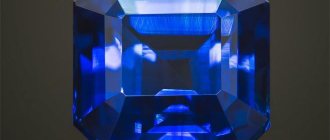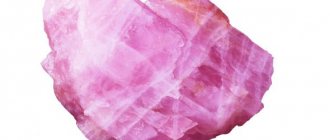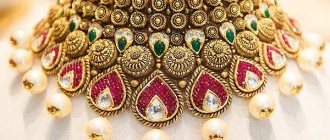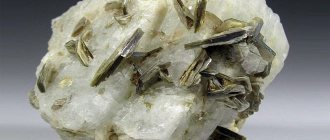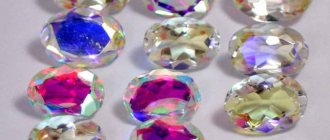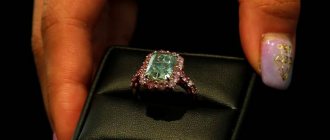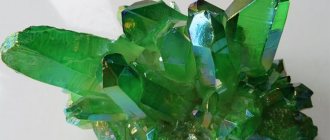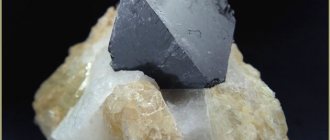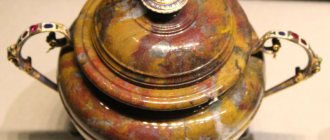Spinel is an original and very rare metal. The gemstone has a rich color and memorable shine.
It has a lot of properties, so it can hardly be called ordinary. The stone can bring happiness and good mood to the owner. But there is one condition - the owner himself must be kind to the spinel.
Brief information about the mineral:
- Suitable for all zodiac signs except: Aquarius, Scorpio and Cancer;
- Prices for 1 carat start at $25;
- Fragile;
- Not demanding in care.
History of the origin of the stone
The famous traveler Marco Polo, who visited the Pamirs in the 13th century, first mentioned spinel as a jewelry stone. Spinel began to be mined in the 9th century in the southwest of the Pamirs in the Kuhilale deposit.
The stone was then often confused with ruby and corundum, so Marco Polo called the spinel deposit “ruby mines.”
With the development of science, the stone was identified as a separate group of minerals with unique physical properties. Despite this, spinel was often used in ancient times. It has always been one of the rarest and most expensive minerals.
The stone served as decoration and a symbol of power for representatives of Germany, Great Britain, Russia, and France:
- The famous “Monomakh's Cap” is decorated with spinel, and not with rubies, as was previously believed;
- The crown of Catherine the Great is inlaid with this stone;
- The Wittelbach Crown was decorated in 1830 with teardrop-shaped spinels. Previously it was assumed that these were rubies.
The stone has had different names over the centuries of its existence: coelonite, noble spinel, picotite, lal, rubicel.
Jewelry crystal
The gem is easy to cut, but specialists and stone cutters have a contradictory attitude towards it. On the one hand, the stone is no worse than other precious or ornamental stones. But the gloomy coloring turns off many. The fact that they used to make mourning jewelry from it did not add to its popularity. Although the association “sadness - black color” is more accepted in Western civilization.
Large specimens, like any other precious stones, are rare in this variety and, despite everything, are valued by jewelers and connoisseurs.
Opaque chrome spinel is considered ornamental. It is often confused with sapphire or garnet of the same color. It is usually used to make beads or bracelets. Most often used as an insert in jewelry. Presentable beads made of black spinel are not prohibitively expensive - five to twelve thousand rubles.
Spinel can be distinguished from other gemstones of similar color and texture by its lack of birefringence.
Jewelers consider the step, diamond or combined cut to be the most suitable for the stone. Specimens with the asterism effect are polished with a cabochon. A remarkable feature of the mineral is that cut stones can seem to glow in the twilight.
Black spinel is practically not counterfeited, but sometimes it happens. Often, under such a brand, which is attractive to many, they put up for sale simple onyx, which is very similar to it. The first sign by which “plagiarism” can be identified is price. Even the cheapest variety – gray-blue – costs from $25 per carat.
Since the beginning of the last century, synthetic black spinel has appeared on the jewelry market. It is produced in sufficient quantities, but it is almost impossible to find in its pure form. The material is used primarily as a substrate in the manufacture of doublets for soft, fragile gemstones (for example, ammolite or thin-layer opal).
In general, it is believed that pure black stones do not exist in nature: there is always some colored, almost indistinguishable shade, most often green or orange-brown.
Sometimes the opposite happens: the initially blue or green specimen is so dark that the black wins, and the shade is visible only in thin sections. Such “illumination” can be produced by magnetite microgrowths, visible only under a powerful microscope with good illumination.
Description and meaning
Spinel is an independent group of minerals. It includes transparent and opaque shiny stones of various shades.
It comes in colorless, blue, grey, light blue, pink, green, purple, yellow, black, red and orange. The red stone is of the highest value for jewelers, it is very similar to the ruby.
Blue spinel is also prized. Large stones are extremely rare, but the value will be correspondingly high.
Spinel has powerful magical properties. It is able to save its owner from loneliness, bring love and happiness. The stone has a complex and capricious character, which must be taken into account.
Spinels are best placed in earrings or a ring. The ring should be placed on the index and ring fingers of the left hand.
Red spinel
Physical properties:
- density – 3.72 g/cm;
- class – Oxides;
- refraction – 1.76;
- has a glassy luster;
- hardness – 8 on the Moss scale;
- fracture – conchoidal;
The stone contains aluminum and magnesium ions. It is very fragile and easily damaged when in contact with a hard surface.
Physicochemical properties of spinel
Spinel is an oxide. Chemical formula: MgAl2O4.
The color range of this mineral is very diverse: all shades of red up to orange-scarlet, green with a transition to black. The stone can be either completely transparent or almost non-transparent. As a rule, spinel has the regular geometric shape of either an octahedron or a dodecahedron.
Advertising - Continued below
Among the varieties of the mineral, noble spinel, ordinary spinel, chrome spinel and ganite (zinc spinel) are distinguished.
Noble spinel includes ruby, sapphire, rubicella, ruby-bale, oriental amethyst, blue and green spinel. Common spinel is a dark green and black stone that is most common; varieties - ceylonite and pleonast - contain large amounts of iron. Chrome spinel is a deep black color.
Colors and types
There are many varieties of spinel, they differ in the degree of transparency and color. But not all of them are considered precious and are classified as jewelry stones.
The most valuable types of spinel are as follows:
Ruby
Spinel has bright red shades.
Bale
The color of the bale ruby is pink-red.
Almandine
Almandine spinel violet-scarlet.
Ribicell red
It has an orange-red or yellowish tint.
Chlorospinel
It has a bright green color.
Sapphire spinel
It has a blue and cyan tint.
Pleonastus
A dirty green stone with a brown tint.
Ceylonite
Has a dark green tint.
Ganospinel
Blue, with a slight purple tint.
Colors and varieties of spinel stone
Ring with blue spinel
The noble pure gem has a watery-transparent or completely colorless structure. True, such a stone is found quite rarely. As a rule, colored minerals are found that contain impurities. They determine the blue, red, brown, pink and black shades of the mineral. Chromium ions contribute to the red color. This stone is called “bale ruby”. Iron impurities give spinel a yellowish tone, and manganese - a lilac-red color.
The following types of spinel exist:
- Noble. The gem is almost entirely transparent. It is characterized by deep shades.
- Ordinary. This gem is called “ceylonite” or “pleonast”. Its structure contains a high iron content. And the colors of the mineral vary from dark green to brown and black.
- Chrome. This variety is a black stone with a large amount of chromium.
- Zinc. Such a specimen is called a “ganite”. It does not contain magnesium, but contains elements such as iron and zinc.
Magic properties
It doesn’t matter whether it’s precious or semi-precious, almost any stone has magical properties.
Wearing spinel brings the gift of foresight to the wearer. The stone takes energy from space and transfers it to the owner.
Spinel creates a positive background - you don’t need to do anything for this, just wearing it. One of the magical properties is to attract sympathy.
Red or pink spinel will give a public figure recognition of the people and a positive image. The stone will help a lover to have a love spell.
Spinel gives happiness only to good people - it is better for the greedy and immoral to avoid it.
The more careful you are with the stone, the more luck it will bring. He can even warn of impending troubles.
People who are too active should not wear it either, it will only worsen their well-being and will not bring anything useful.
Physical and chemical properties
The chemical composition of spinel is magnesium and aluminum oxide.
In some cases, these metals are replaced with iron, zinc or chromium. This does not affect the physical characteristics of the gem, only the shade. Spinel is a hard transparent stone with a glassy surface. On the Mohs scale, its hardness ranges from 7.5 to 8 units.
The most valuable are red and pink spinel. The richer the shade and more transparent the crystal, the more expensive the stone. Known varieties:
- Transparent. Outwardly, spinel is similar to diamond, but when cut it does not have the same shine.
- Red (ruby) spinel. The shade varies from red to wine due to chromium impurities. The price for 1 carat of such a gem reaches $1000.
- Bale-ruby. Pinkish shade of red. Manganese in the crystal gives a beautiful purple tone.
- Almandine. Red or pink with a distinct purple tint.
- Rubicell. The color varies from pale yellow to orange depending on the amount of iron impurity.
- Sapphire. A very rare variety of spinel from blue to deep blue. Dark blue specimens are valued in the same way as ruby ones.
- Chlorospinel. Rare green gems, in small quantities, were discovered only in the Urals.
- Ceylonite. Due to the large amount of iron, the stone is opaque and has a brown or brown color. Occurs most often.
- Picotite. Almost black spinel with an admixture of chrome.
- Hercynite. Black crystals with dark green tints were found in Yakutia. They are not used in jewelry, but are popular among collectors.
Medicinal properties
The healing properties were first described by the ancient occultist and healer Paracelsus. He used stone powder to treat many diseases.
Modern experts also do not deny the beneficial properties. Spinel activates blood circulation, copes with skin diseases, helps with myopia, relieves pain in muscles and joints, and has a general strengthening effect.
The properties of the stone depend on its color:
- Red stone helps improve blood circulation, strengthen the immune system, and provide support for paralysis. In ancient times in the East, spinel was considered a sexual stimulant and was used by men to attract women. Sorcerers used the stone to make amulets to enhance sexual performance. Therefore, you should not give it to children and teenagers.
- Green stone helps to get rid of pain in the joints and head, and is useful for heart and eye diseases and hypertension. Spinel helps normalize metabolism.
- Pink stone calms, relieves sleep problems, and eliminates skin diseases.
- Blue spinel is useful for diseases of the gastrointestinal tract, kidneys, endocrine system, liver and lungs.
- Black spinel relieves pain from bruises and wounds, reduces bleeding, and improves well-being. The stone is useful for hypotension.
Mineral value
It is worth noting that not all varieties of this gem are recognized as precious stones and are intended for jewelry production. In the process of research, mineral scientists have identified a number of types of spinel that are classified as ordinary stones and are not considered precious - these are black and brown gems.
The most valuable is considered to be spinel (including synthetic) in orange and red shades, similar in saturation to ruby, as well as neon and dark blue crystals. Natural specimens of the stone are quite rare, and their price is incredibly high. Laboratory conditions make it possible to obtain a mineral of the desired size and shade. Especially fashionable now is a gem of a blue hue, close to sapphire or aquamarine.
Under natural conditions, spinel is mined in large deposits of Thailand, Kampuchea, and Vietnam. Less significant mining sites are located in Madagascar, India and Australia. The most valuable types of the red mineral are mined in Myanmar, and the blue ones are mined in Sri Lanka.
Talismans and amulets
Spinel is best worn in a gold frame - this helps the stone to fully reveal itself. Talismans have strong energy - they relieve apathy, helping you move further towards your goal.
It's good to take to training, study or work. Spinel helps you concentrate, absorb information more easily and provide practical application in the future.
The stone must be worn at social events. In this case, communicating with a large number of people will not cause difficulties, shyness will disappear. The pleasure of the holiday will be guaranteed!
For a romantic setting and a first date, the amulet must be used - spinel will help create a strong and happy family and ensure love.
Those who are already married should keep jewelry made from this stone in their home.
The former passion will return, diversity will be added to the relationship.
Compatibility with other stones
Noble spinel should be worn in gold to enhance its characteristics.
The complex issue of stone compatibility is resolved for us by mineralogical astrology. Spinel belongs to the fire element, combines with minerals of the Air element, mutually enhancing its properties and without entering into contradictions.
Spinel has three patron planets: the Sun, Venus and Jupiter with rhythms that influence the stone and the wearer. This indicates the mineral’s inconsistency and inconstancy. The Wheel of Fortune is always in motion, the chance can go away, happiness is replaced by disappointments and deprivations.
Being complex and contradictory, spinel requires attention to its individuality. Even if it is only one ring or pendant, a product with such a stone will not go unnoticed and will indicate your undoubted taste.
Influence on zodiac signs
- The zodiac sign of the stone is Leo , but other fire signs ( Sagittarius, Aries ) can also wear it. It improves intelligence, physical qualities, increases energy and strength.
- To improve health, spinel should be worn by Libra, Taurus and Pisces. It will add strength, especially to people who are constantly on business trips or often make responsible decisions. For Gemini, the stone will give peace of mind, and
- Capricorns – lightness and optimism.
- Virgos a lot of extra energy.
For Aquarius, Scorpio and Cancer, spinel is not entirely suitable. Aquarius may experience laziness and apathy. Scorpios will stop distinguishing truth from lies, which is very dangerous. Cancers will become relaxed and serene.
Who is suitable according to their zodiac sign?
Spinel, so different in color and energy, arouses interest.
| Zodiac sign | Compatibility |
| Aries | + |
| Taurus | + |
| Twins | + |
| Cancer | — |
| a lion | + |
| Virgo | +++ |
| Scales | + |
| Scorpion | + |
| Strelei | + |
| Capricorn | + |
| Aquarius | — |
| Fish | +++ |
(“+++” – fits perfectly, “+” – can be worn, “-” – is strictly contraindicated).
When choosing a spinel jewelry or amulet, you need to take into account its fiery essence.
Application and Decoration
Red stone is usually used for rings and necklaces. Large rubies on royal decorations, crowns, and treasuries turned out to be fake, since they rarely come in such sizes.
It was spinel that helped emphasize the status and wealth of high-ranking people.
Blue spinel is similar to sapphires, green - to emeralds. Black stones are sometimes sold as diamonds, so you should always check the quality certificate.
Among jewelers, transparent bright spinel is usually called “noble”. Natural synthetic stone is common, as the differences are difficult to notice.
Spinel jewelry
Jewelers value transparent pink, red, green, blue or colorless gems; black and purple stones are less commonly used. Spinel is made from:
- earrings;
- rings;
- bracelets;
- brooches;
- pendants;
- necklace.
Spinel looks expensive and requires an appropriate wardrobe. An elegant evening dress or an expensive suit will be the best outfits to pair with a brooch, bracelet, massive pendant, or necklace. For everyday wear, you can use a ring or pendant with a small stone, or drop earrings.
Features of wearing spinel:
- does not go well with other stones, is incompatible with turquoise and amethyst, can be worn with garnet;
- not recommended for constant wearing - a possible negative impact on the owner in the form of increased negative qualities;
- Should not be worn by children and adolescents due to overexcitation.
View this post on Instagram
Publication from Author's jewelry?? Annetka (@annetkasdv) July 16, 2021 at 9:35 PDT
View this post on Instagram
Posted by HiGems (@higems_) Jul 16, 2021 at 5:31 PDT
View this post on Instagram
Publication from ?PRIVATE JEWELRY PACE? (@catrine_b_jewelry) Jul 10, 2019 at 4:04 am PDT
How to care for a mineral
Caring for spinel is simple:
- the jewelry is stored in a case or box separately from other jewelry - the edges are erased from friction;
- Do not allow prolonged exposure to direct sunlight - the mineral will fade;
- the product must be removed during physical activity or housework - sweat, moisture, chemically active substances negatively affect the shine;
- The gem should be cleaned no more than once every 3 months by soaping with baby soap and then rinsing with running water; if necessary, you can rub with a soft brush;
- After washing, dry with a soft towel.
In the video there is a decoration with a black stone:
Price
Real spinel cannot be cheap - a low price should alert the buyer. 1 carat of the cheapest model in blue-gray color is about 25 dollars.
Purple spinel costs about $200. Pink and blue stone - $100-300. The most famous and rare red spinel exceeds $600 per carat.
Application area
Opaque pleonaste is ornamental; specimens with purity and beautiful shades can be used as a noble mineral. Thanks to the controversial attitude towards black and dark stones (partly anachronism), prices for products are more affordable. Original and large crystals are valued by collectors.
Picotite is often used as an ornamental material; it can be confused with black sapphires or garnets. Picotite beads can be purchased from 5-15 thousand, often used in bracelets, beads and as inserts in more complex jewelry.
High quality spinel is an expensive jewelry stone, second only to diamonds and rubies. When cut, spinel can surpass ruby in saturation, depth and brilliance, but is inferior in hardness, smoothing out in the corners and on the edges of the faces. Used to create top-class jewelry.
Dark varieties of gems may seem gloomy in the absence of sunlight, while light varieties look impressive even in insufficient lighting without losing their shine. The price of a stone is influenced not only by color, but also by uniformity, transparency, purity, size (the price per 1 carat increases with the size of the stone), processing, and its historical value. The market value of noble spinel ranges from 25 dollars per carat (ganospinel) to 500 (red spinels and sapphires).
Pink and ruby spinel
Cut - brilliant or step. When asterism appears (an optical effect - the appearance of a star-shaped figure when illuminated), which looks better with a convex surface, it is processed with a cabochon.
Care
Spinel is a very fragile stone that requires careful handling and careful maintenance.
It is necessary:
- Store separately in a box (preferably with a soft inner lining).
- Take pictures during physical work and household chores.
- Avoid falls and impacts.
- Avoid contact with aggressive chemical media.
- Clean with a soft brush and mild soap solution once every 3-5 months.
How to wear and care
Spinel is a fragile stone and therefore requires careful handling and proper care.
Wearing tips
Spinel should not be worn every day, firstly, because the stone may become pale and damaged and, secondly, it should sometimes take a break from its owner. It is better to wear jewelry with spinel to significant events where its energy can be useful.
The metal of the Sun, gold, is more suitable for the setting of talismans and amulets. This helps enhance the energy of the stone.
It is also recommended to wear jewelry made of noble spinel in gold (as jewelers call transparent, bright specimens).
Red stones usually serve as inserts in rings and rings.
Both noble and ordinary spinel are used in earrings and rings. It is recommended to wear rings on the index or ring finger of the left hand.
Stone care
Spinel is a rather fragile mineral; due to frequent use and improper care, its edges wear off.
In order for the stone to remain beautiful for a long time and retain its beneficial properties, it is necessary:
- Store separately from other jewelry in a box or casket with a soft inner lining (or in a velvet bag).
- Protect from shocks and falls.
- Take off during physical work, training, and cleaning around the house.
- Avoid exposure to sunlight for a long time to avoid losing its natural shine.
- Keep away from contact with aggressive chemicals.
- Clean as needed, preferably no more than twice every six months. When doing this, use a weak soap solution and a soft brush. After rinsing under running water, dry with a soft cloth. After this, the stone should rest in the dark.
How to distinguish from a fake?
When choosing a stone, you need to pay attention to the following factors:
- Price. If the stone costs less than $25, it is most likely a fake.
- Natural spinel cannot look perfect - various defects and inclusions confirm the authenticity of the stone.
- Certificate of quality. Only the best jewelers can provide it, so it is better to buy the stone from them.
How to distinguish a synthetic mineral
Despite the fact that natural and artificial gems are similar in appearance, they are radically different in composition and properties. Synthetic spinel stone (most of it) consists of magnesium and aluminum oxide, since these substances are used as starting components in laboratory crystallization of the mineral. This property manifests itself in such a way that the refraction of an artificial crystal is much more noticeable than a natural one.
In the modern market of precious stones for the jewelry industry, blue minerals are in greatest demand, replacing sapphire, lapis lazuli or aquamarine, depending on the shade.
To distinguish a blue artificial analogue from a natural crystal, experts use the Chelsea method, which consists of the following:
- To carry out the analysis, a special filter of the same name is used;
- if, upon closer examination, it is discovered that the blue gem has a clearly visible scarlet or burgundy glow, this indicates the artificial origin of the mineral.
This is explained by the fact that the red tint comes from cobalt, which is added to magnesium and aluminum oxide during cultivation to produce blue or blue synthetic spinel.
Synthetic spinel
The synthetic production of the material first occurred by accident. The goal was to obtain a hexagonal sapphire, but instead a cubic spinel was removed from the Verneuil apparatus. Since then, metal began to be created artificially.
Synthetic blue spinel
The synthesis began to gain momentum, and research was also carried out to study the properties of the mineral. Its use for industrial purposes was discovered - spinel began to be used as an optical and dielectric material.
The stone is more popular among jewelers, but has a subordinate meaning. For example, it is used for cutting. Synthetic spinel has a vibrant color.
Names and deposits of stone
The black gem was first discovered on the island of Sri Lanka, formerly known as Ceylon. Even today, the country remains a leader in the extraction and export of minerals.
Other largest deposits are located:
- in Russia;
- USA;
- China;
- Germany;
- France;
- Australia:
- Norway.
In Russia, the breed is actively mined in the following areas:
- the Urals (Shishim and Nazyam mountains of the Stone Belt);
- Yakutia (Fedorovskoye field).
The gem is known by some other names:
- Ceylonite. The mineral bore this name for a long time, associated with its first location.
- Pleonastus. This name was given to the stone by the Greeks, who were surprised by the many facets of a natural crystal. Translated from ancient Greek, “pleonastus” means “abundance”, “redundancy”.
- Ferrous spinel. Due to the frequently occurring iron in the composition. “Spinel” comes from the German word “thorn,” which is associated with the pointed shape of natural crystals.
Interesting Facts
- For creative people - musicians and artists, it is recommended to wear rings with spinel on the ring or index finger of the left hand, and wear earrings with a stone. It will give inspiration, new ideas, and help create a unique masterpiece.
- It is necessary to become a sincere and kind owner for the stone - then it will reveal all its positive qualities. It is dangerous to deceive and hide the truth from spinel.
- You shouldn’t wear the stone every day - you can go into a fantasy world.
- If a person has a nervous job, you can talk out all the problems to the spinel or just think about them while looking at the stone. Calm will come, thoughts will be put in order and a way out of any situation will be found.
- Spinel should not be worn with other stones, otherwise the mineral may cause harm.
Beauty Queen - Royal Stone! Spinel
Spinel is sometimes called "the greatest gemstone impostor in history" - many famous historical rubies, including the giant crown stone of the British Empire, were actually spinel. In Burma, where spinel of the most revered red color is mined in Mogog, spinel has been recognized and recognized as an independent type of gemstone since 1600, but in other countries the “masquerade” continued for hundreds of years. Historically, the small red spinel was revered almost as much as the ruby, sometimes even more! Today, after the rarest red diamonds and rubies, spinel is the most expensive and valuable of all red stones. Gemological dossier: Color range: black, orange, blue, greenish blue, violet, red, green, yellow Refractive index: 1.712 – 1.736 Chemical formula: Mg(Al2O4) Hardness: 8 Density: 3.58 – 3.61 Crystal structure: Cubic Birefringence: No Dispersion: 0.026 In recent decades, spinel has become a recognized favorite of both professional dealers and collectors. The reason for this is its significantly increased availability and qualities such as a wide range of colors, hardness and brightness. The most valued and expensive colors are “traffic light” red and “cobalt” blue. Externally, bright red spinels are very difficult to distinguish from first-class rubies, and bright blue ones are very difficult to distinguish from first-class sapphires. Pure colorless spinel also occurs, but is extremely rare, and almost always shows a very faint pink tint. Also rare are spinels with an asterism effect (4- and 6-rayed stars) and spinels with a noticeable effect of changing light. Spinel is usually found in alluvial placers together with corundum, and also in associations with gneisses, garnets, serpentine, calcite and dolomite. Large deposits are known in Burma, Sri Lanka, Afghanistan, Tajikistan, the countries of East Africa, and Madagascar. Spinel is found in Russia and other countries of Southeast Asia. Spinel is great for use in jewelry. Its hardness and low fragility make it possible to create miracles of cutting, and the brightness, almost “glassy appearance” of the stone, especially the red one, which almost “fluoresces” in any light, gives spinel an amazing, beautiful appearance. The brightness and transparency of spinel are due to the almost complete absence of liquid inclusions, and the wonderful play of color is due to a large number of microscopic inclusions of individual spinel crystals, located along the growth lines of the main crystal, and refracting light independently along their natural edges. In addition to inclusions of “micro spinels,” large crystals often become “shelters” for equally microscopic crystals of albite, anhydrite, apatite, baddeleyite, calcite, olivine and titanite. In history, the noble red spinel has become no less famous than diamonds and emeralds... In 1330, the Moorish prince of Granada, Abu Said, inserted a huge red ruby into his crown. But he did not have the opportunity to delight others for long; in 1336, Abu Said lost the stone along with his crown and life. The crown went to the despot of Seville, Don Pedro. In the same year, Don Pedro was attacked by his own brother, but the despot managed to fight back and defend himself and his wealth. He had to turn to the friendly “Black Prince,” the Comte de Bordeaux, for help. In payment for the rescue, the Count “Black Prince” demanded from Don Pedro all his jewelry, including the red giant that came into his possession. History is silent about how the “Black Prince” ruby came to England. But it is known that at the beginning of the 15th century, King Henry V of England decorated his knight’s helmet with this stone. In 1415, during the Battle of Agincourt (those were the days - kings fought in the front ranks!!!) the helmet saved Henry’s life when struck by the battle ax of the Duke of Alencon! Both the king and his crumpled helmet survived the war safely, and the Black Prince's ruby remained in the hands of the British. Later, King James I ordered the ruby to be installed in the crown, and the ruby became and remains to this day the “jewel”, the central decoration of the Crown of the British Empire. Weighing 170 carats, almost 5 cm long, the bright red stone seems to glow from within itself!!! Only in the 20th century, as a result of research carried out by gemologists at the British Museum, it turned out that the world-famous “Black Prince” ruby was in fact a red noble spinel with clear signs of Burmese origin! Crown of the British Empire and the Black Prince The Black Prince, while the most famous spinel in the world, is by no means the largest stone among spinels. Timur's Ruby, also adorning the Royal Crown of England, weighs 361 carats! And it also turned out to be spinel! The names of the 6 most famous owners in its history are engraved on the stone. “Ruby” by Timur Another giant red noble spinel that belonged to the royal family, weighing 414 carats, is kept in the museums of the Moscow Kremlin! The world's largest and most vibrant collection of red spinel adorns the crown of the Persian Shahs. These stones came to Iran (Persia) 350 -400 years ago during the plunder of the treasury of the fallen Mogul empire. The largest spinel in this crown, and in the world in general, weighs 500 carats, more than two dozen - about 100 carats each, ten stones are engraved with the name of Jahangir, one of the last Mogul emperors (Great Mughals - as they are often called in Russian-language literature) . Mogul 500-carat stone from the crown of the Persian Shahs Spinel as a mineral. The name of the gemstone “ Spinel ” actually refers to quite numerous varieties of the mineral family under the general name, having different chemical compositions and their characteristic colors. The isomorphic series of spinel (containing aluminum as a crystal-forming element of the variety) includes: Spinel - MgAl2O4 (KP = 1.719, pl. ~ 3.60) Hercynite - FeAl2O4 Gunite - ZnAl2O4 (KP = 1.805, pl. = 4.62) Galaxite - MnAl2O4 In the isomorphic series Magnetites (containing iron as a crystal-forming element of the variety) include: Magnetite - FeFe2O4 Magnesioferrite - MgFe2O4 Ulvospinel - FeFeTiO4 Franklinite - ZnFe2O4 Jacobsite - MnFe2O4 Trevorite - NiFe2O4 The isomorphic series of chromites (containing chromium as a crystal-forming element of the variety) includes: Chromite - FeCr 2O4 Magnesiochromite - MgCr2O4 Listed The spinel mineral series is not limited to varieties of spinels; we have mentioned only those that can represent at least minimal jewelry-cutting value. Most of these species are very rarely found in nature. The most common varieties are the spinel series, as well as magnetite and chromite. From the point of view of gemology, spinel and ganite are of greatest interest. The general name “Spinel” refers to gemstones from the spinel series. Faceted varieties of magnetites and chromites are usually called by their proper names. Spinel , as a rule, has red, blue, black, very rarely green or colorless. Ganit - Blue-green, green-blue, less often brown, extremely rarely yellow. Two more varieties of noble spinel are widely known: Pleonast (another name is ceylonite ), (Mg,Fe)Al204 - colors from dark green to blue-green and black; Hanospinel , (Mg,Zn)Al204 - colors from gray-violet to dark blue, and also black. Spinel is allochromatic and has no electronic color centers. The color of spinel depends solely on the presence and concentration in the form of microimpurities of chemical elements - chromophores: Cr3+ - red, pink; Fe2+ - blue, violet; Fe2+ + Co2+ - dark blue; Fe3+ - yellow, green. To identify spinel, refractometry is the most important method, allowing you to solve the problem without much difficulty. Spinel is isotropic, the refractive index of various spinels lies in the range of 1.712 – 1.720. rarely, bright red spinel can give an index of 1.74 The only isotropic gemstone with which refractive indices can “cross” is grossular. But as a rule, its refractive index is higher, and it is impossible to confuse grossular with spinel by color. Ganospinel has a refractive index of 1.725 – 1.753, pleonast (ceylonite) – 1.77 – 1.80. The refractive index of black spinel – herzenite from deposits in Thailand – is 1.789. The refractive index of synthetic spinel is 1.727. The polariscope will show a black field for any natural spinel under a refractive filter. Natural spinel does not exhibit birefringence. SYNTHETIC SPINELS. Synthetic spinels have been synthesized using the Verneuil method since 1893 by growing from flux. In 1930, gas deposition technology was developed and first used to produce synthetic spinel. The attempt to find a way to synthesize spinel, different from the classical Verneuil scheme, was due to the very high fragility of Verneuil stones, and for red spinel, also to the very small size of the resulting boules. During the research process, the creators of the technology changed the classic spinel ratio MgO/Al2O3 = 1/1 towards increasing the aluminum oxide content. As a result, stones began to grow larger and no different from natural spinel in fragility. This spinel is sometimes called “beta corundum” due to its high aluminum content. The technology has caught on, and now almost all synthetic spinel is produced using this method. But the factors that allowed this technology to exist also became factors that help distinguish synthetic spinel from natural spinel. Due to the increased aluminum content, the optical properties of the synthetic material have changed. Such spinel has weak birefringence, noticeable even when using a standard refractometer with a resolution of 0.01. A refractometer with a resolution of 0.005 makes the identification of such synthetics even easier. In addition, having become more “closely related in chemistry” to synthetic corundum, such spinel acquired another distinctive feature - very small spherical gas bubbles, clearly visible under a microscope, located in parallel lines along the growth lines of the boule. This effect is especially evident in the “most valuable” red synthetic spinel. Currently, flux growth (according to Czochralki) and vapor deposition methods are widely used for the production of synthetic spinel. Below are comparative characteristics of such spinels and methods for their diagnosis.
~~~~~~~~~~~~~~~~~~~~~~~~~~~~~~~~~~~~~~~~~~~~~~~~~~~~~~~~~~~~~~~~~~~~
Dear masters and non-masters!
You can ask any questions about gemstones and gemological topics. I kindly ask you to ask questions not related to a specific publication in a specially created topic on my personal blog.
